|
Visit our keyboard shortcuts docs for details
Get essential tips for visiting Grand Teton National Park in spring from two park rangers. Join them at the truck, as they discuss hiking, biking, wildlife viewing, and more. Learn how to navigate spring's changing conditions and get the most out of your trip. Made in partnership with Grand Teton National Park Foundation. 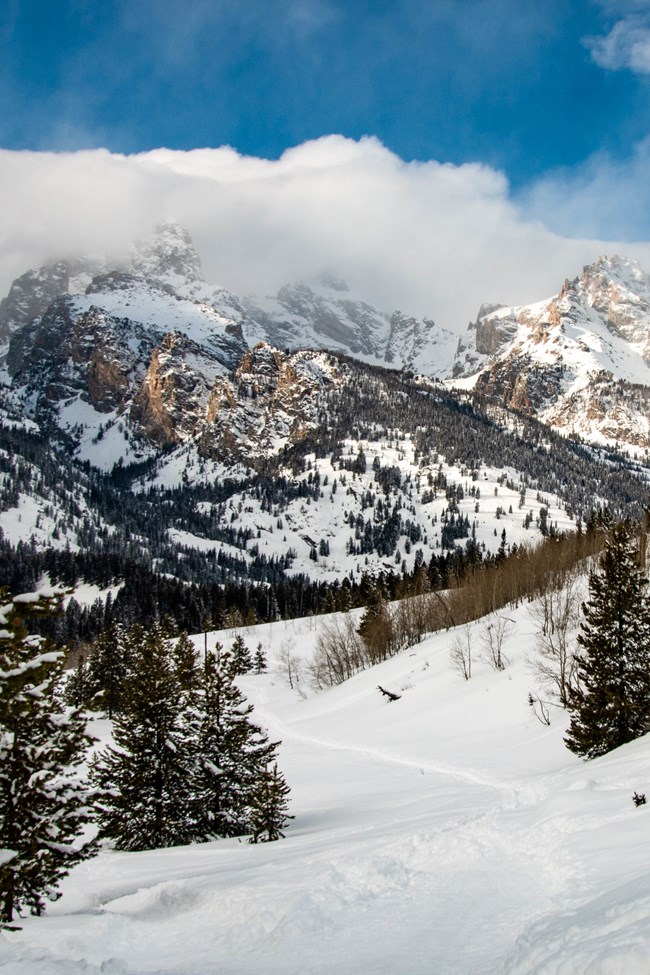
NPS Photo/L Watkins What's Open?Visitor Centers and InformationVisitor centers in the park will begin opening in May. Restrooms or portable toilets are available at the Taggart Lake Trailhead, Signal Mountain Lodge, Colter Bay Visitor Center, and Headwaters Lodge at Flagg Ranch. Gas, pay at the pump, is available at Signal Mountain, Jackson Lake Lodge, and Headwaters Lodge at Flagg Ranch. All other concession facilities including lodging, campgrounds, restaurants, and stores are closed until mid-May. For opening dates for facilities and services in the park, check the Operating Hours & Seasons page. For lodging facilities in the Jackson Hole area, visit the Jackson Hole Chamber of Commerce at http://www.jacksonholechamber.com/. National Elk Refuge and Greater Yellowstone Visitor CenterLocated at the National Elk Refuge in Jackson. April 1-April 6, open Tuesday-Saturday. April 7-April30, open Tuesday-Saturday 9am-5pm. May 1-summer, open daily 9-5pm. Information, exhibits, bookstore, and restrooms. Park Roads
Other secondary roads openings vary. Visit the Park Roads page. 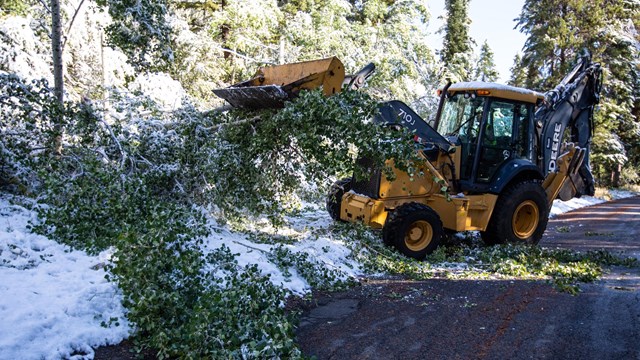
Current Conditions and Park Alerts
Know what to expect in the park today. 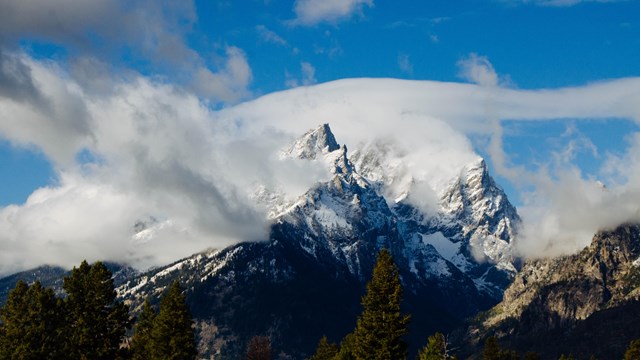
Weather
Learn what weather to expect when you visit Grand Teton. 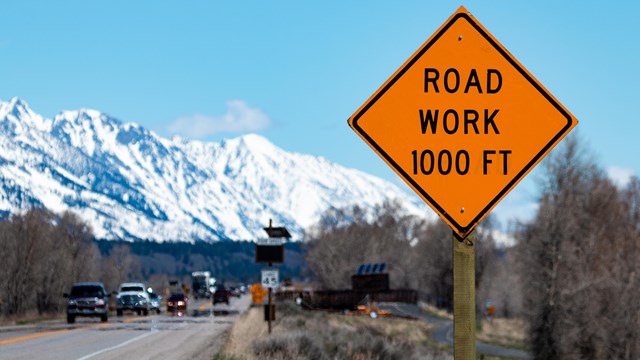
Park Roads and Construction
Check the status and seasonal closing dates of park roads. 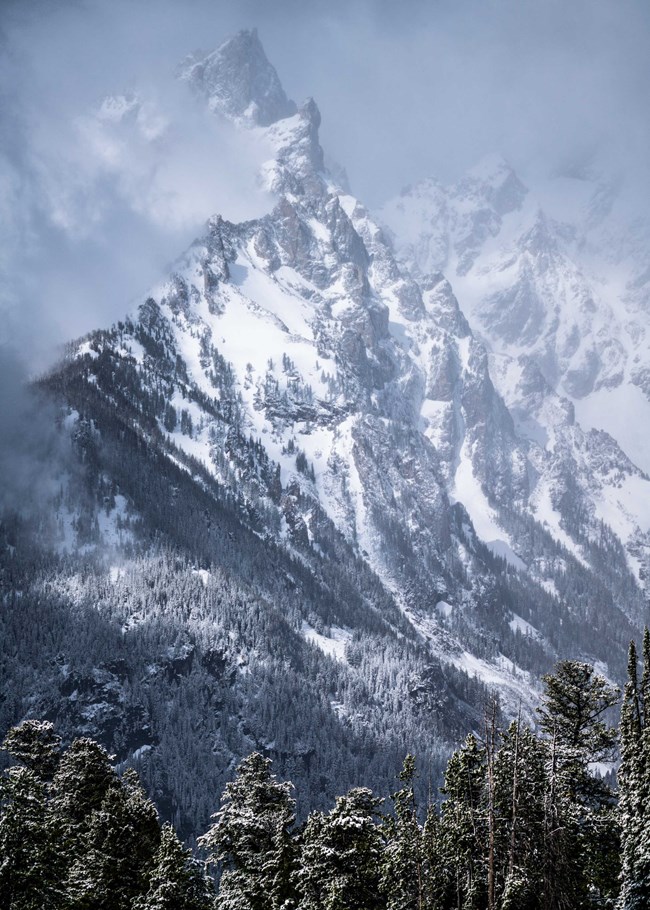
NPS Photo/C. Adams Spring ActivitiesDiscover your path by exploring the park in the spring. Are you prepared for Spring Conditions?Deep Snow Spring Safety
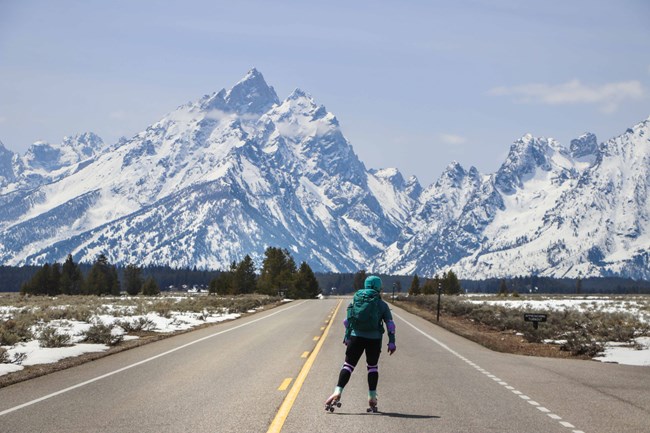
NPS Photo/A. Falgoust Go for a Ride on the Teton Park RoadThe Teton Park Road between Taggart Lake Trailhead and Signal Mountain Lodge is open to pedestrian travel only, from early April—April 30. 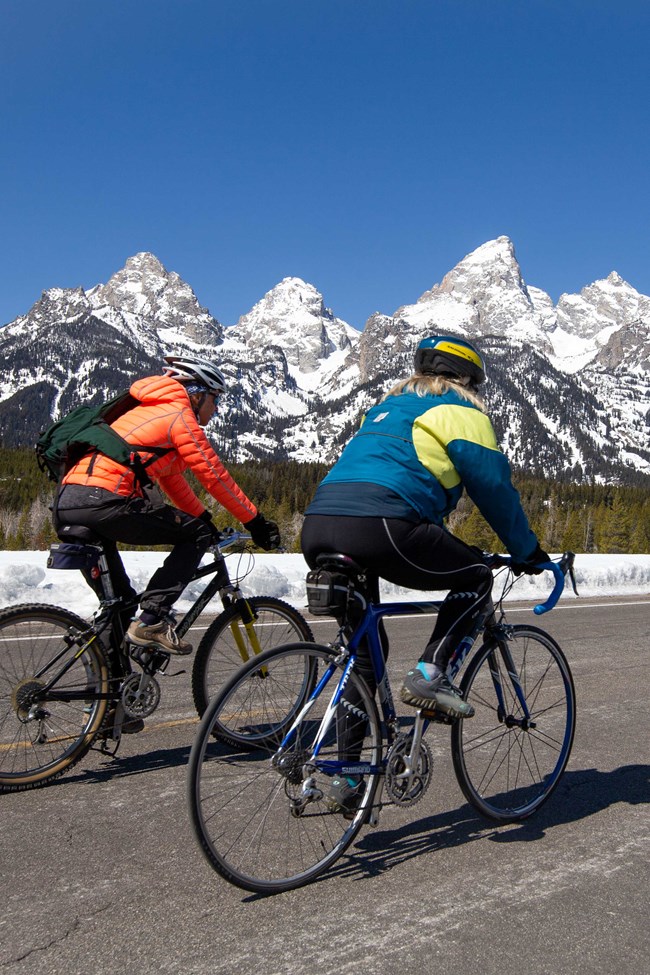
NPS Photo/A. Falgoust Taggart Lake to Jenny Lake8.4 miles round-trip Jenny Lake Scenic Loop15.8 miles round-trip Taggart Lake to Signal Mountain14 miles one way, 28 miles round-trip Visitors enjoying the Teton Park Road, should consider:
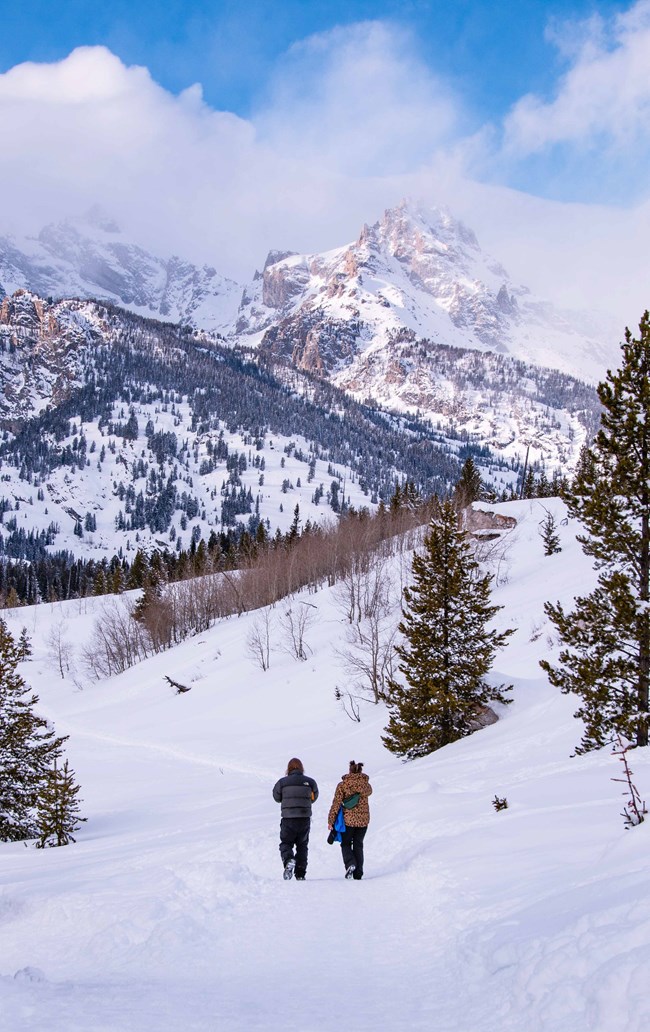
NPS Photo/L. Watkins Hike a Valley TrailAs winter relinquishes its grip, valley trails are the first to emerge from the snow. Areas outside of Taggart Lake Trail are largely inacessible in April. Taggart Lake Trailhead Hikes:Taggart Lake Trail3.0 mile round-trip, 2 hours, 350 ft total climbing, Less Challenging. Taggart Lake-Beaver Creek Loop3.9 miles round-trip, 2-2.5 hours, 500 ft total climbing, Challenging. Taggart Lake-Bradley Lake5.9 miles round-trip, 3 hours, 800 ft total climbing, Challenging. 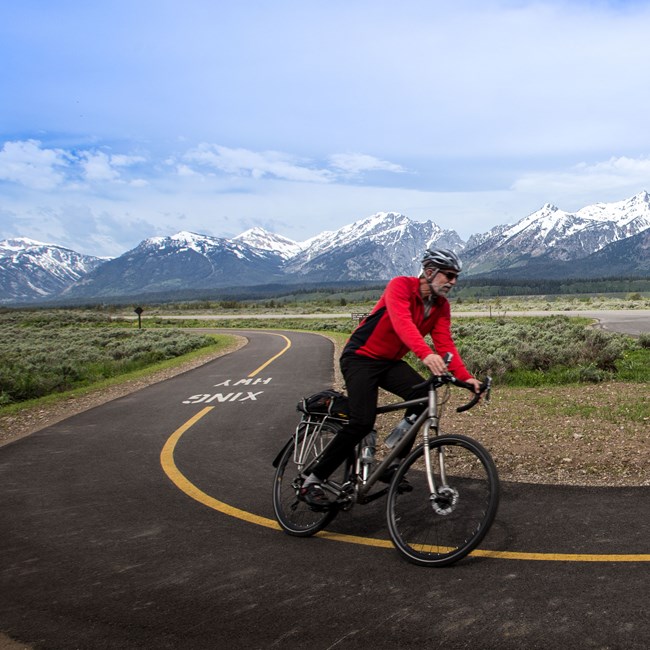
NPS Photo/J. Tobiason Bike, Skate, & Walk the Grand Teton PathwayAnother way to experience spring's awakening is to journey on the park's pathway where you can bike, hike, and skate along the valley floor. The park pathway is open whenever predominately free of snow and ice.
Learn more about the Grand Teton Pathway and Biking in the Park. 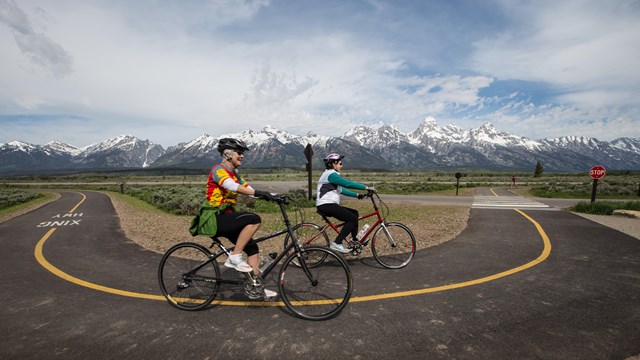
Bike, Hike, Skate
Journey on the Grand Teton Pathway. 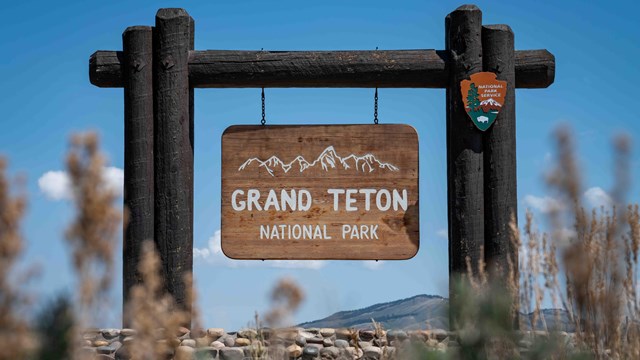
Operating Hours and Seasons
Learn the hours and seasons for facilities in the park. 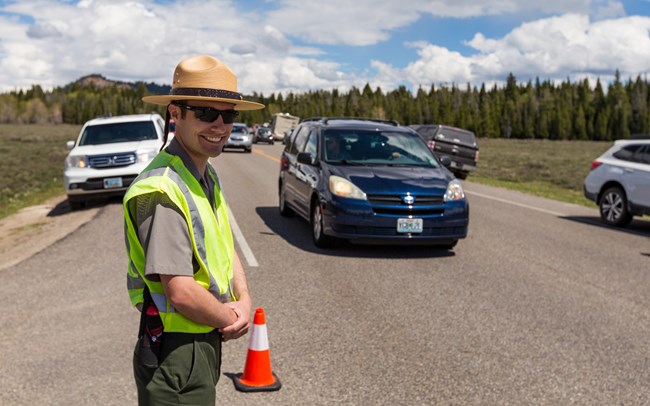
NPS Photo/C. Adams Go For A DriveTake in the sights of Grand Teton by taking a scenic drive through the park. Where to go
The Teton Park Road is closed to vehicle traffic between Taggart Lake Trailhead and Signal Mountain Lodge until May 1. 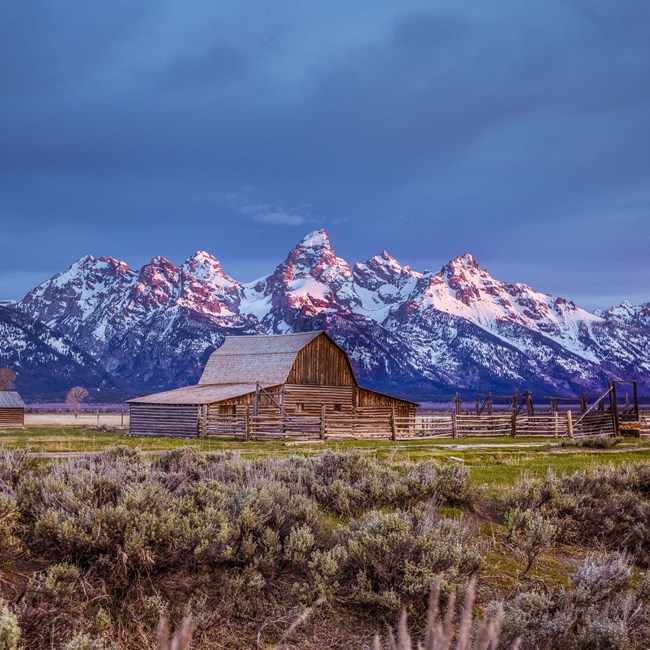
NPS Photo/J. Tobiason Stroll Through HistoryVisit these historic locations. Road access is dependent on weather and snow melt. Mormon RowDrive out to the intersection of Antelope Flats and Mormon Row to see the iconic Moulton Barn. This barn, along with others along Mormon Row, were built by homesteaders and feature the Teton Range as a backdrop. A bison herd is often in the area. The barns on Mormon Row are some of the most photographed places in the National Park Service. Menor's FerryVisit the Menor's Ferry Historic District to learn about the life of homesteaders in early Jackson Hole and the creation of Grand Teton National Park. Go on an audio tour of Menor's Ferry using the NPS Grand Teton App. General Store, Chapel of Transfiguration, and other buildings are not open. The Murie RanchOlaus and Margaret Murie were two prominent national leaders of conservation. They were instrumental in the creation of the Wilderness Act and several wilderness areas. 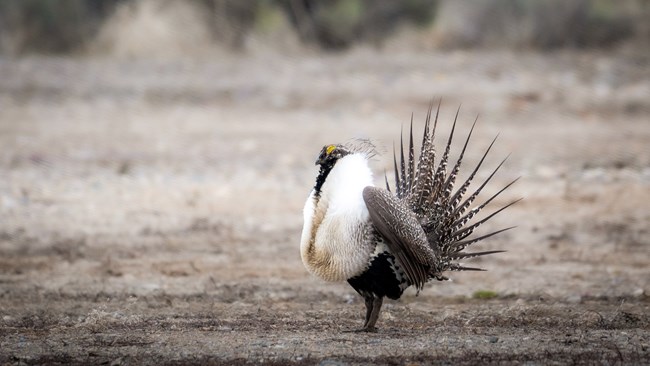
NPS Photo/C. Adams Watch Sage Grouse StrutJoin a ranger led program. 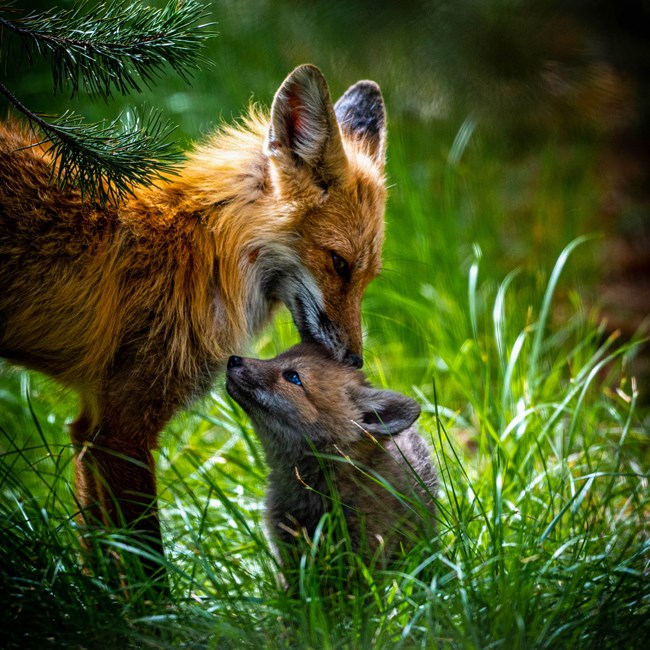
NPS Photo/C. Adams Look for WildlifeSpring is a great time to see wildlife among wildflowers, sagebrush flats, and meandering creeks. Migrating elk, deer, and pronghorn are common along park roadways.

Be Bear AwareGrizzly and black bears are waking up in Grand Teton National Park and the John D. Rockefeller, Jr. Memorial Parkway. You may encounter a bear anywhere at anytime. Some of the most popular areas and trails pass through excellent bear habitat. Your safety cannot be guaranteed. Federal regulations require you to stay at least 100 yards (91m) away from bears and wolves, including when you are in your vehicle. Learn more about bears, safe bear viewing and how to properly use bear spray at Safety in Bear Country. Areas Closed to Protect WildlifeMultiple temporary and wildlife closures are necessary for protection of wildlife, including bears, moose, elk, bighorn sheep, and waterfowl during critical nesting periods. For the latest closures and maps check the Wildlife Closure page. 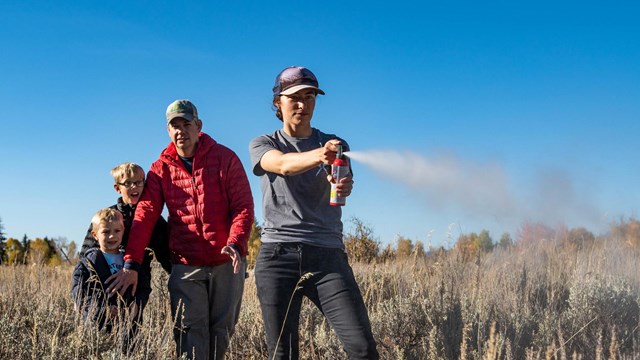
Wildlife Safety
Learn how to stay safe around wildlife. 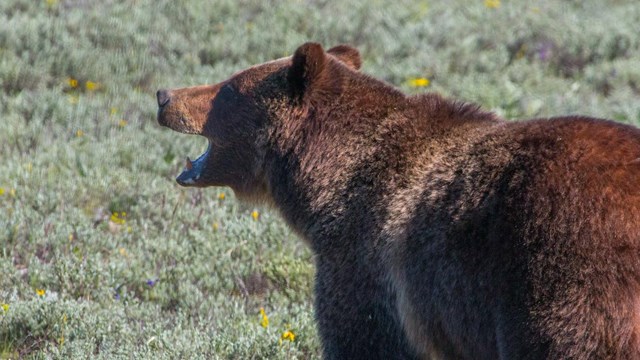
Temporary & Wildlife Closures
Know where you can go. Follow all temporary and wildlife closures. 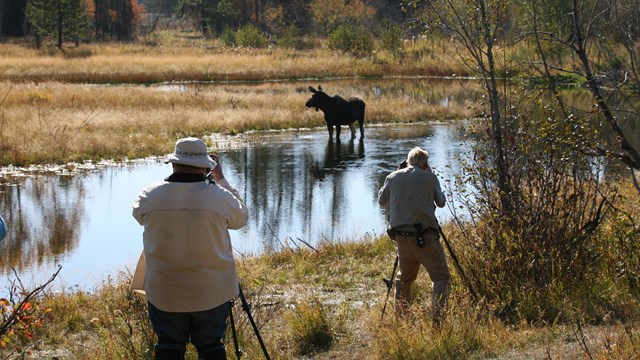
Wildlife Viewing
Learn more about the wildlife in Grand Teton. 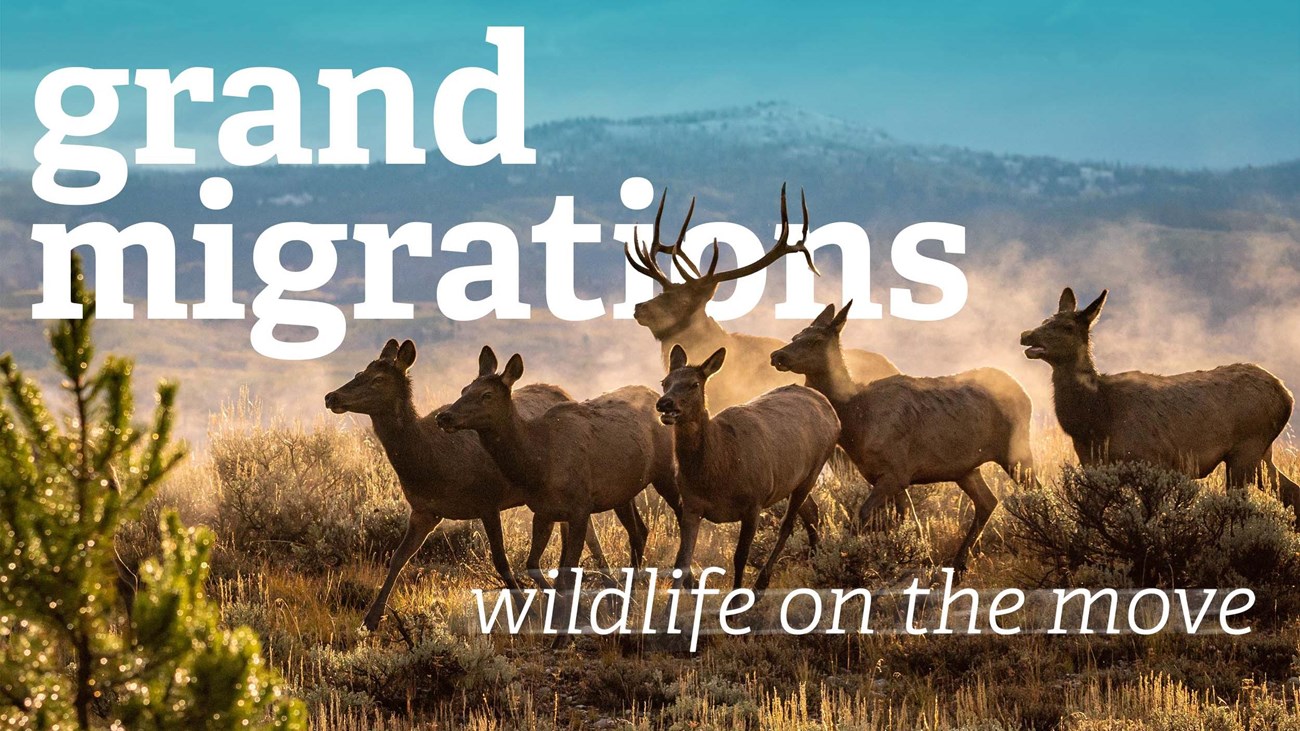
Grand Migrations
Grand Teton is a renowned for its abundant wildlife, but many of the animals that call the park home only live here part of the year. 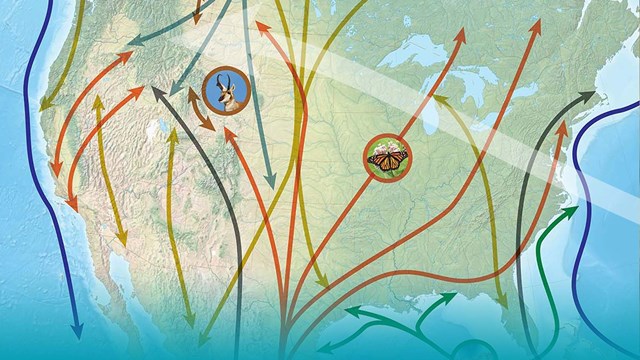
What is Migration?
Find out how and why animals migrate (and why others don't). 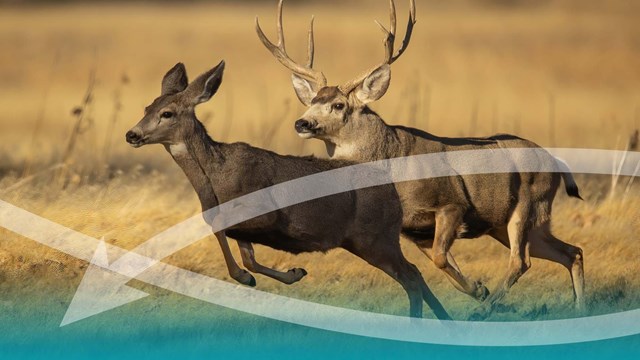
On the Move: Mule Deer Migrations
Traveling hundreds of miles over mountain passes and fording wide rivers mule deer migrate to survive. 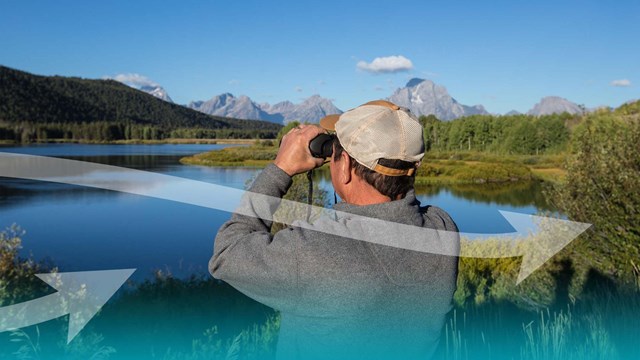
Migrations Need You
What can you do to help wildlife migrations? "Sprinter" (Spring+Winter)As winter conditions persist in the park, keep safety in mind when planning to venture into the backcountry. Safety in the BackcountrySkiers and snowboarders are reminded that your safety is your responsibility. You must rely on your own good judgment, adequate preparation and constant awareness. Backcountry users should be in good physical condition and stick to routes that are within their ability and comfort levels. Hypothermia and frostbite can set in quickly, and are difficult to care for in the backcountry. Take preventative measures to avoid the dangers of cold weather; look for signs of hypothermia and frostbite on members of your group. Traveling alone can be especially dangerous; always give friends or family a detailed itinerary and stick to your plan. Permits are required for all overnight backcountry trips. Avalanche & Backcountry InformationIf you are planning to travel in the backcountry during the winter and spring, be sure to check the local avalanche forecast. Avoid known avalanche paths. All skiers and climbers traveling in avalanche terrain should be equipped with, and know how to use, an avalanche beacon, probe pole, and shovel. For current conditions, call 307-733-2664 for the U.S. Forest Service avalanche report or go to: bridgertetonavalanchecenter.org. Hypothermia is caused by exposure to cold and is aggravated by wind, exhaustion, and wet clothing. Warning signs include: uncontrollable shivering, incoherent speech, lethargy, and exhaustion. Remove the victim from the elements as soon as possible. If in doubt, seek immediate medical attention. For weather information, links to weather forecasts and avalanche reports as well as average temperatures and precipitation, visit the Weather page. 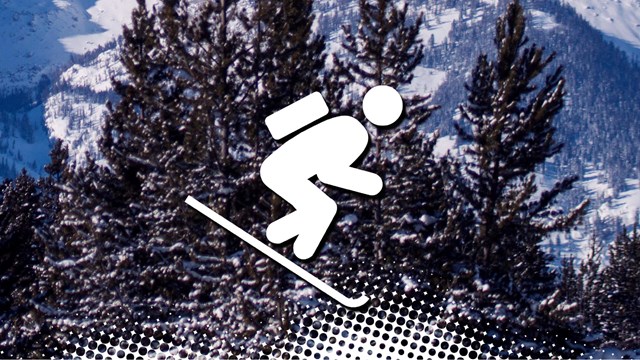
Be Safe in the Backcountry
How to have a safe ski and snowboard in Grand Teton's backcountry. 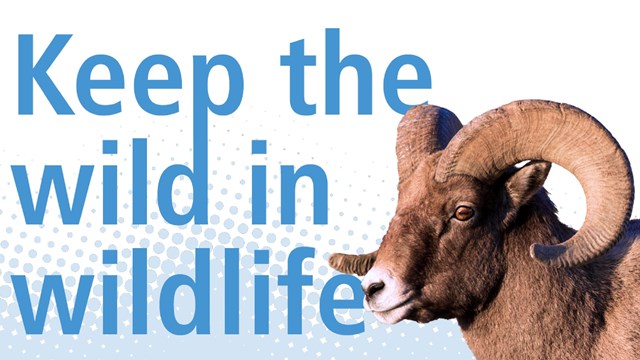
Know Where You Can Go
Protect sensitive winter wildlife by giving wildlife space. Follow all wildlife and temporary closures. |
Last updated: March 28, 2025
